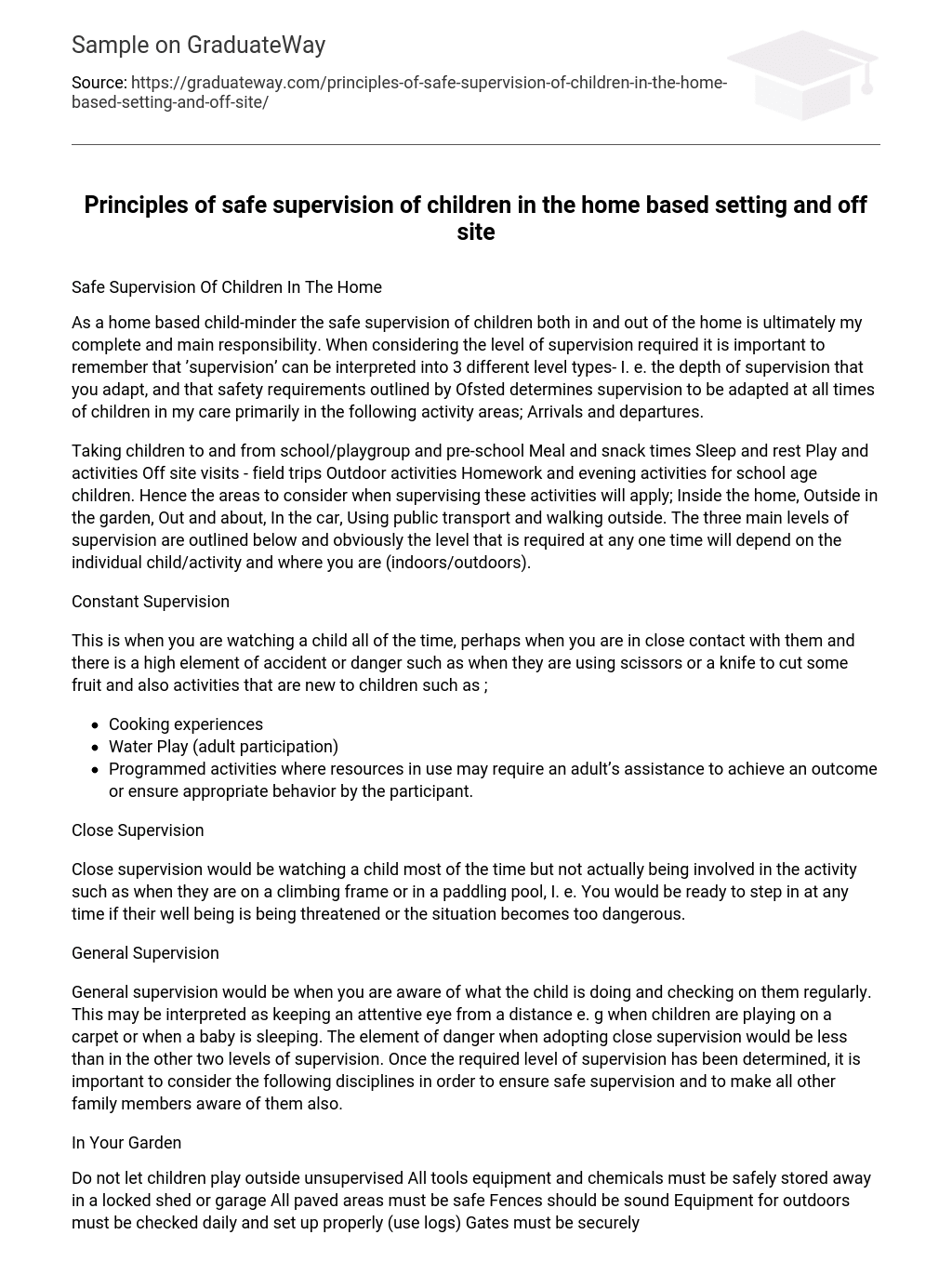Safe Supervision Of Children In The Home
As a home based child-minder the safe supervision of children both in and out of the home is ultimately my complete and main responsibility. When considering the level of supervision required it is important to remember that ’supervision’ can be interpreted into 3 different level types- I. e. the depth of supervision that you adapt, and that safety requirements outlined by Ofsted determines supervision to be adapted at all times of children in my care primarily in the following activity areas; Arrivals and departures.
Taking children to and from school/playgroup and pre-school Meal and snack times Sleep and rest Play and activities Off site visits – field trips Outdoor activities Homework and evening activities for school age children. Hence the areas to consider when supervising these activities will apply; Inside the home, Outside in the garden, Out and about, In the car, Using public transport and walking outside. The three main levels of supervision are outlined below and obviously the level that is required at any one time will depend on the individual child/activity and where you are (indoors/outdoors).
Constant Supervision
This is when you are watching a child all of the time, perhaps when you are in close contact with them and there is a high element of accident or danger such as when they are using scissors or a knife to cut some fruit and also activities that are new to children such as ;
- Cooking experiences
- Water Play (adult participation)
- Programmed activities where resources in use may require an adult’s assistance to achieve an outcome or ensure appropriate behavior by the participant.
Close Supervision
Close supervision would be watching a child most of the time but not actually being involved in the activity such as when they are on a climbing frame or in a paddling pool, I. e. You would be ready to step in at any time if their well being is being threatened or the situation becomes too dangerous.
General Supervision
General supervision would be when you are aware of what the child is doing and checking on them regularly. This may be interpreted as keeping an attentive eye from a distance e. g when children are playing on a carpet or when a baby is sleeping. The element of danger when adopting close supervision would be less than in the other two levels of supervision. Once the required level of supervision has been determined, it is important to consider the following disciplines in order to ensure safe supervision and to make all other family members aware of them also.
In Your Garden
Do not let children play outside unsupervised All tools equipment and chemicals must be safely stored away in a locked shed or garage All paved areas must be safe Fences should be sound Equipment for outdoors must be checked daily and set up properly (use logs) Gates must be securely fastened.
Dustbins/wheelie bins/re-cycling bins must not be accessible to children If pets are present then children’s play areas must be free of pet food and waste Areas of water including butts or ponds and sand pits must be securely fenced off or covered. All plant life in the garden must be safe Clothes lines/rotary driers must be safe and not trailing.
Outside Of The Home
- By Car: Use of seat belts for adults Tax, MOT, business – use insurance Seats/restraints for children Child locks on doors Getting in and out the car should be safe… Driving safely at all times When using other people’s cars ensuring they are safe.
- By Public Transport: Checking that everyone stands back from the curb edge when at a bus stop or train platform Ensuring that young children wear safety harnesses Getting children to hold your hand Buggies and prams in good working order Knowing your journey and planning your route beforehand Children should sit next to you on busses/trains.
Walking
Children should be taught how to stay safe when near to/ crossing the road. Green cross code according to age Always put yourself between the road and the child when possible Use restraints/reins where applicable. Don’t allow children to run ahead Teach children about stranger danger particularly when in parks and adventure playground. Ultimately, once disciplines have been put in place in the different areas when supervising children, then this will ultimately assist when determining the levels of supervision required as the safety of the child is paramount in any home based child care setting. Also having procedures in place when out and about in case children get lost or separated is considered as good practice for any child-minder.





